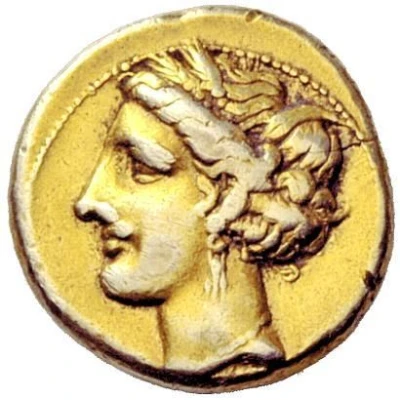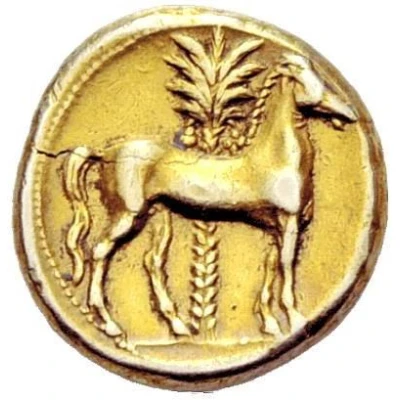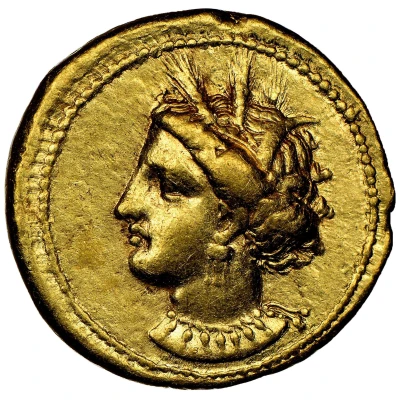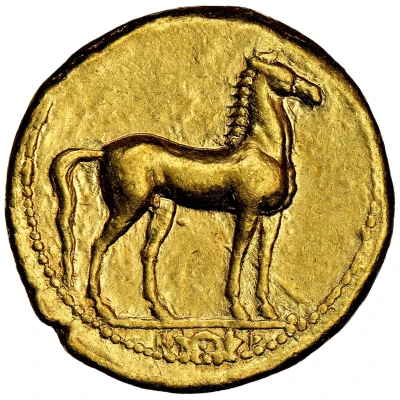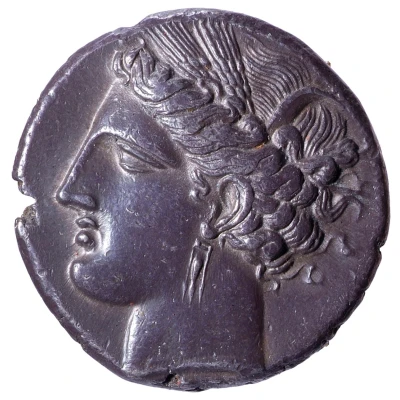
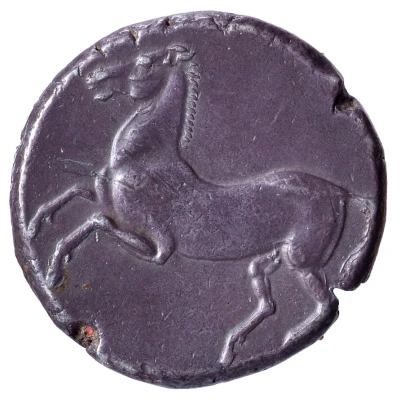

© Trustees of the British Museum
Dodekadrachm 270 BC - 260 BC
| Silver | 45.55 g | 36 mm |
| Issuer | Carthage (Zeugitana) |
|---|---|
| Type | Standard circulation coin |
| Years | 270 BC - 260 BC |
| Value | Dodecadrachm (6) |
| Currency | Shekel |
| Composition | Silver |
| Weight | 45.55 g |
| Diameter | 36 mm |
| Shape | Round (irregular) |
| Technique | Hammered |
| Demonetized | Yes |
| Updated | 2024-10-09 |
| Numista | N#322709 |
|---|---|
| Rarity index | 100% |
Reverse
Horse prancing left
Interesting fact
The Dodekadrachm coin was used as a form of currency in the ancient city of Carthage, which was located in present-day Tunisia. The coin features an image of the Carthaginian goddess Tanit, who was revered as a protector of the city and its people. The coin's design also includes a symbol of the city's wealth and power, a stalk of grain, which reflects the importance of agriculture in the Carthaginian economy. The Dodekadrachm coin was used for both local and international trade, and its use can be traced back to the 3rd century BC.
